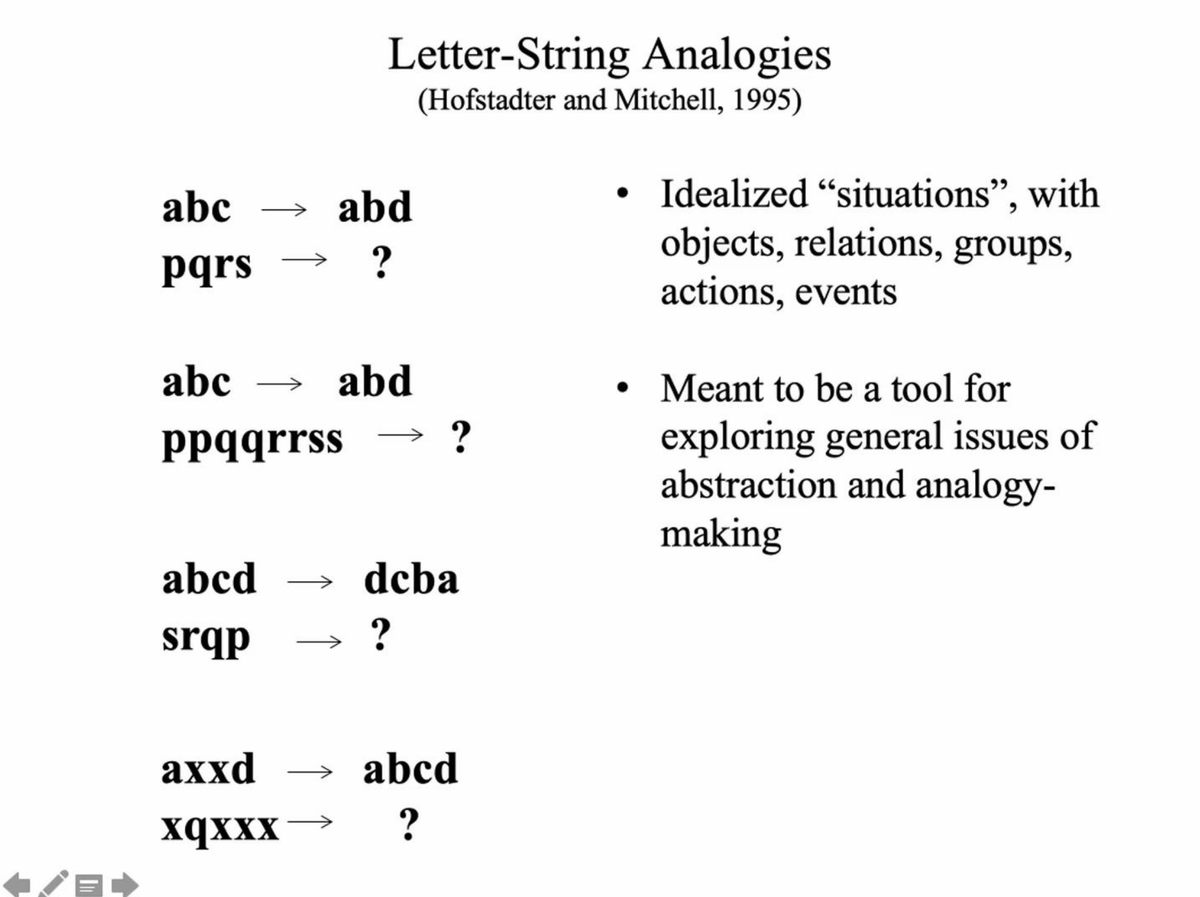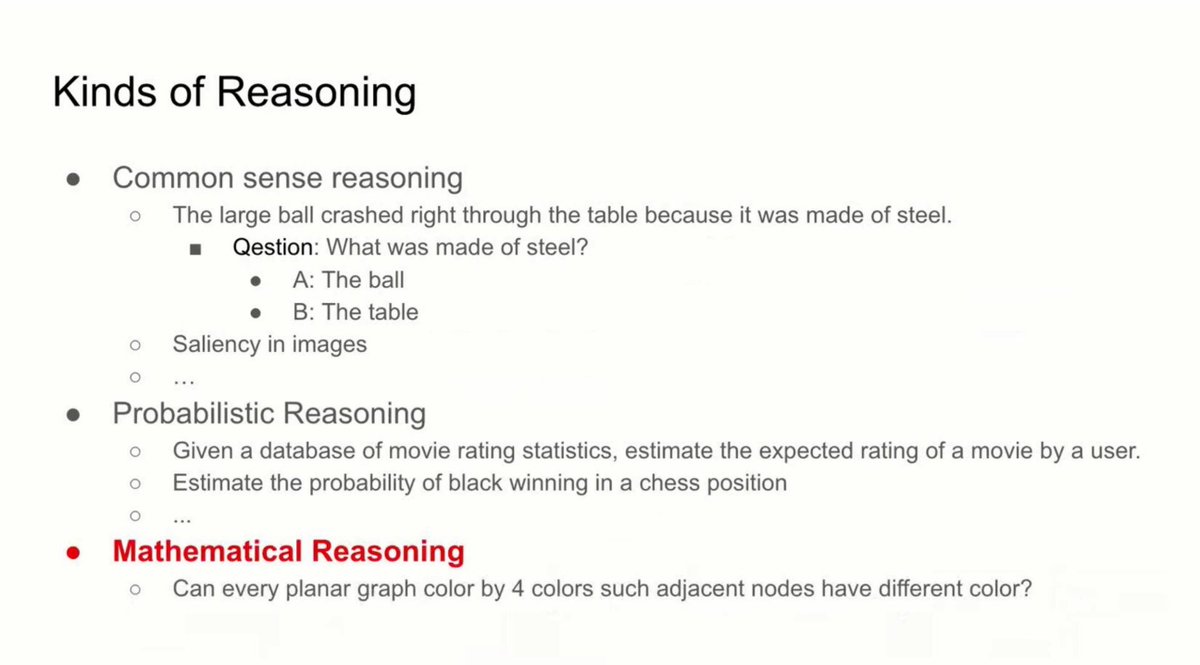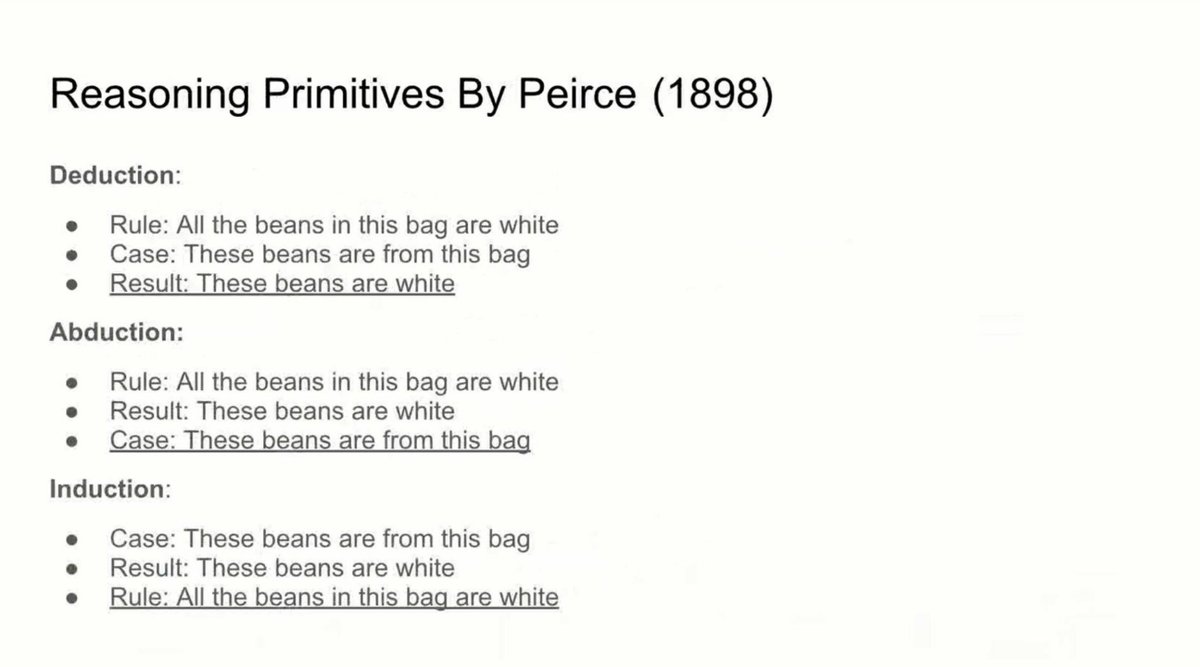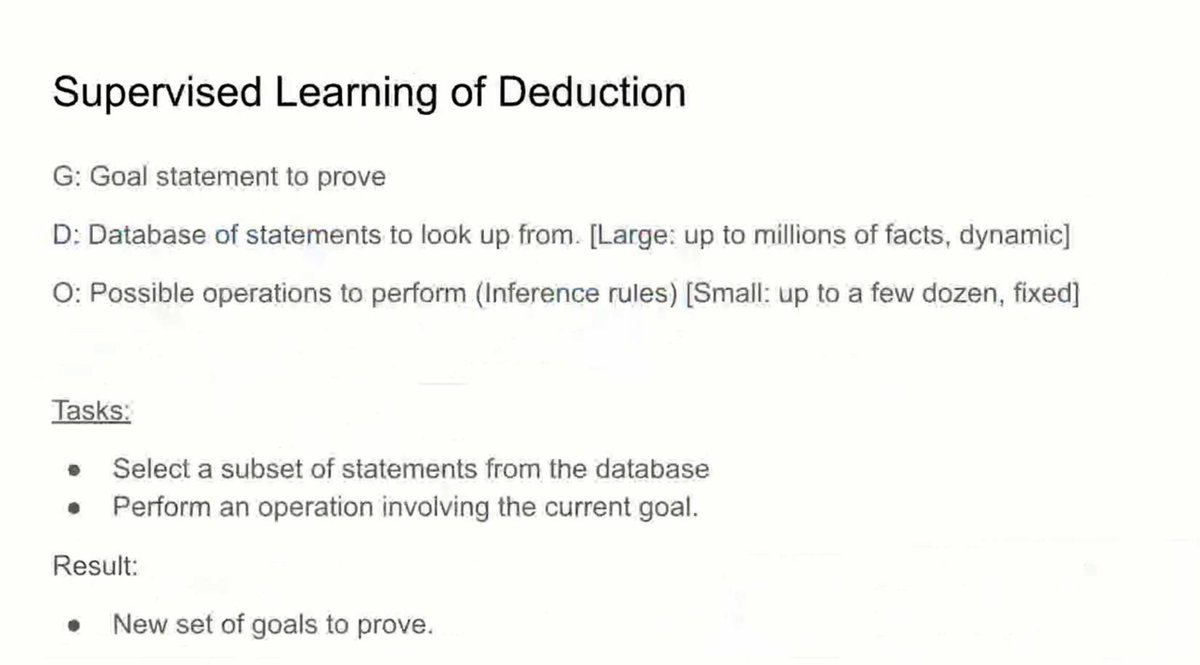A deeply interesting tutorial by @fchollet @MelMitchell1 @ChrSzegedy at #NeurIPS2020
" #Abstraction & #Reasoning in #AI systems: Modern Perspectives "
or "What are abstraction, generalization and analogic reasoning?"
1/



 https://neurips.cc/virtual/2020/protected/tutorial_877466ffd21fe26dd1b3366330b7b560.html
https://neurips.cc/virtual/2020/protected/tutorial_877466ffd21fe26dd1b3366330b7b560.html
" #Abstraction & #Reasoning in #AI systems: Modern Perspectives "
or "What are abstraction, generalization and analogic reasoning?"
1/



 https://neurips.cc/virtual/2020/protected/tutorial_877466ffd21fe26dd1b3366330b7b560.html
https://neurips.cc/virtual/2020/protected/tutorial_877466ffd21fe26dd1b3366330b7b560.html
@fchollet begins by laying some foundations in notation and background.
E.g., Generalization is a spectrum (and we are looking at lower bands in #ML nowadays)
2/
E.g., Generalization is a spectrum (and we are looking at lower bands in #ML nowadays)
2/
And Abstraction? It is the engine behind generalization!
And of course it comes in different flavors:
- program-centric: that is akin to high-level reasoning (inducing & merging programs)
- value-centric (interpolating examples) essentially what #DL does and excels at!
essentially what #DL does and excels at!
3/
And of course it comes in different flavors:
- program-centric: that is akin to high-level reasoning (inducing & merging programs)
- value-centric (interpolating examples)
 essentially what #DL does and excels at!
essentially what #DL does and excels at!3/
and since we most likely need BOTH kinds of generalization via abstraction ....whatever some #DL aficionados conjectures, #DL alone is not going to solve everything alone
right, @GaryMarcus ; ) ?
4/
right, @GaryMarcus ; ) ?
4/
so the most natural thing is to leverage both program-centric abstraction, e.g., via program induction and value-centric by DL
This successfull #hybrid #AI approach is for instance the cooking recipe of Alpha{Go|Star|Fold|...}!
5/
This successfull #hybrid #AI approach is for instance the cooking recipe of Alpha{Go|Star|Fold|...}!
5/
now is the time for @MelMitchell1 to talk about #analogical reasoning!
...back from the seminal inception of #AI at Dartmouth, the challenge of learning #concepts and #abstractions is still wide open!
6/
...back from the seminal inception of #AI at Dartmouth, the challenge of learning #concepts and #abstractions is still wide open!
6/
this challenge of course did not go unnoticed in the modern #AI, #ML and #DL communities.
Take for instance the task of Raven's progressive matrices to measure (A)I: complete a sequence of 8 images as solving an analogical reasoning task
Take for instance the task of Raven's progressive matrices to measure (A)I: complete a sequence of 8 images as solving an analogical reasoning task
What would the #DL approach be on Raven's matrices?
Generate enough #data procedurally and...feed a #deep neural net to it!
And ta-da!
 If you place your convolutions correctly, you got super-human performances!
If you place your convolutions correctly, you got super-human performances!
arxiv: https://arxiv.org/abs/2002.01646
8/
Generate enough #data procedurally and...feed a #deep neural net to it!
And ta-da!

 If you place your convolutions correctly, you got super-human performances!
If you place your convolutions correctly, you got super-human performances!arxiv: https://arxiv.org/abs/2002.01646
8/
...however, this is another case where the NN is smart enough to take a #shortcut, hidden in the data-generation process
(waiting for another tutorial where #intelligence is correlated to #lazyness)
If you remove this shortcut, performances suddenly drop close to random
9/

(waiting for another tutorial where #intelligence is correlated to #lazyness)
If you remove this shortcut, performances suddenly drop close to random
9/
A fascinating prototype of a #hybrid #AI for analogical reasoning is COPYCAT (1995) by @MelMitchell1 and Doug Hofstadter
Solving analogies over a string matching domain by harnessing program-centric abstraction via codelets reading and writing from two kinds of memories
10/
Solving analogies over a string matching domain by harnessing program-centric abstraction via codelets reading and writing from two kinds of memories
10/
How to go from COPYCAT to more general concept learning that can be marries with #Deeplearning?
Among the future directions @MelMitchell1 sketches, I like the hidden deep analogy that essentially says we shall not try to exploit our benchmarks and metrics as... shortcuts!
11/
Among the future directions @MelMitchell1 sketches, I like the hidden deep analogy that essentially says we shall not try to exploit our benchmarks and metrics as... shortcuts!
11/
Lastly, @ChrSzegedy looks at #Deep models for mathematical reasoning -- aka crisp deductive reasoning
Kudos for citing Peirce! essentially the inventor of #semiotics and the father of modern #design (design = abduction, right @salvzingale?)
12/
Kudos for citing Peirce! essentially the inventor of #semiotics and the father of modern #design (design = abduction, right @salvzingale?)
12/
Q: how to do mathematical reasoning with deep architectures?
A: same old deep recipe:
- turn reasoning into (supervised) prediction
- create huge datasets (millions of data points)
- play with neural variants (recurrent/recursive/graph/transformers/...)
13/
A: same old deep recipe:
- turn reasoning into (supervised) prediction
- create huge datasets (millions of data points)
- play with neural variants (recurrent/recursive/graph/transformers/...)
13/
It's not clear how these models generalize or extrapolate, especially when multiple steps (hops) are required
This definitely looks like a current challenge!
And reminds me of the works on Neural Theorem Provers by @PMinervini @riedelcastro @_rockt
14/
This definitely looks like a current challenge!
And reminds me of the works on Neural Theorem Provers by @PMinervini @riedelcastro @_rockt
14/
The tutorial has ended, but there is still a QA session tomorrow 


https://twitter.com/MelMitchell1/status/1336110646014791681?s=20
Bonus slide by Doug Hofstadter:
Q: "What is a concept?"
A: "A package of analogies"
15/end



https://twitter.com/MelMitchell1/status/1336110646014791681?s=20
Bonus slide by Doug Hofstadter:
Q: "What is a concept?"
A: "A package of analogies"
15/end

 Read on Twitter
Read on Twitter


























